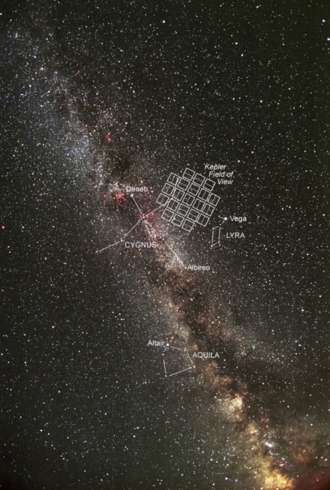Kepler Telescope Can’t Be Fixed

The Kepler telescope’s field of view includes about 150,000 stars in the Cygnus and Lyra constellations in the Milky Way. Courtesy Carter Roberts, NASA/Ames Research Center
The planet hunting community is mourning the loss of the Kepler Space Telescope, and so am I. Since May, Kepler technicians have been trying to fix the telescope’s broken reaction wheel, a mechanism that keeps the telescope steady and controls where it is aimed. But on August 15th, NASA announced that Kepler would no longer be able to search for extrasolar planets.
But all is not lost: astronomers have collected mountains of data about the numbers and sizes of extrasolar planets, and how many planets orbit in the habitable zone of their parent stars. Since the telescope was launched in 2009, Kepler has detected 3,548 planet candidates. At this point, astronomers have confirmed that 135 of them are indeed planets. And just this past April the Kepler team announced the discovery of two planets that so far are the most similar to Earth. The two planets lie in the habitable zone of star Kepler 62 and are 50% bigger than Earth.
William Borucki, the principal investigator of the Kepler mission, told the New York Times that “The most exciting discoveries are going to come in the next few years as we search through this data. In the next few years we’re going to be able to answer the questions that inspired Kepler: Are Earthlike planets common or rare in the galaxy?”
Most of us have gazed into the night sky and wondered whether there are other planets like Earth “out there.” In fact, astronomer Geoff Marcy says that questions like these fueled his desire to develop the first method for detecting extrasolar planets. Kepler’s legacy has been to provide us with an important piece to the puzzle about what lies beyond Earth. Now we know that most of the stars that light up the night sky have orbiting planets. It remains to be seen how many of them support alien life.








